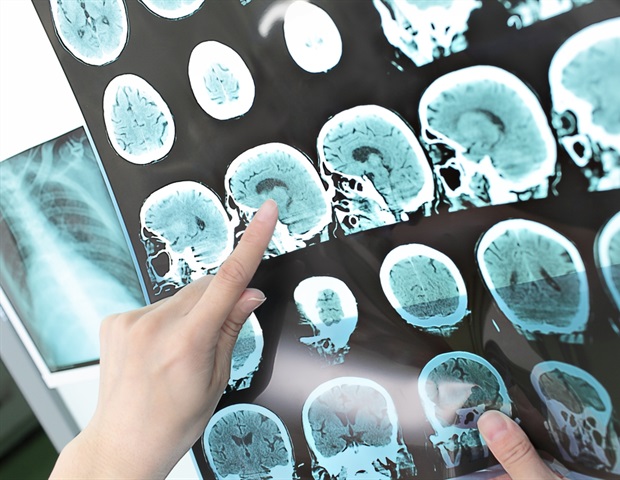
[ad_1]

Receiving a clot-busting drug in an ambulance-based cellular stroke unit (MSU) will increase the probability of averting strokes and full restoration in contrast with normal hospital emergency care, based on researchers at Weill Cornell Medication, NewYork-Presbyterian, UTHealth Houston, Memorial Hermann-Texas Medical Middle and 5 different medical facilities throughout america.
The examine, revealed on-line within the Annals of Neurology on Oct. 6, decided that MSU care was related to each elevated odds of averting stroke in contrast with hospital emergency medical service (EMS) – 18 p.c versus 11 p.c, respectively – and the next proportion of sufferers – 31 p.c versus 21 p.c – had early symptom decision, inside 24 hours after stroke.
Sufferers on this examine have been handled with tissue plasminogen activator (t-PA), a mainstay remedy delivered intravenously (IV) in stroke instances. The drug dissolves the clot in an artery that’s blocking blood stream to the mind, making therapy time vital. “Whereas that is identified to enhance affected person outcomes, what number of sufferers absolutely recuperate afterward wasn’t clear from prior analysis,” mentioned lead creator Dr. Babak Benjamin Navi, affiliate professor, vice chair for hospital neurology providers and chief of stroke and hospital neurology, within the neurology division at Weill Cornell Medication. He’s additionally appearing medical director of the MSU, operated by NewYork-Presbyterian, in collaboration with Weill Cornell Medication, Columbia College Irving Medical Middle, and the Fireplace Division of New York.
Each minute counts when treating stroke
“On common, the quicker you deal with somebody, the extra seemingly you’re to have an excellent purposeful consequence since you’re in a position to protect extra mind tissue,” Dr. Navi mentioned, who can be affiliate professor of neuroscience on the Feil Household Mind and Thoughts Analysis Institute at Weill Cornell and the medical director of the stroke middle at NewYork-Presbyterian/Weill Cornell Medical Middle. “The mind can solely maintain lowered blood stream for thus lengthy earlier than everlasting damage develops.”
Utilizing multicenter trial information from 2014-2020, the researchers evaluated 1,009 sufferers: 644 obtained t-PA in an MSU, and 365 obtained EMS care. Total, sufferers obtained t-PA at a median interval of 87 minutes after the onset of stroke signs. The examine discovered that with t-PA therapy on this time-frame, about one in 4 sufferers who had a suspected stroke recovered inside 24 hours and one in six averted a stroke with no demonstrable hint of mind damage on an MRI.
The end result improved for sufferers handled by an MSU for the reason that time from symptom onset to therapy was 37 minutes quicker than for EMS care, that means many extra sufferers obtained important t-PA inside the essential first hour. MSU care additional elevated the chances of averting a stroke with almost one-third of sufferers recovering to regular inside 24 hours. As well as, the researchers discovered different elements that contributed to higher affected person consequence: therapy inside the first 45 minutes, youthful age, being feminine, historical past of excessive ldl cholesterol, decrease blood stress, decrease stroke severity and no blockage of huge blood vessels.
Bringing the therapy to the affected person
Each 40 seconds, somebody in america has a stroke, based on the American Coronary heart Affiliation. This examine highlights the necessity for optimizing stroke methods of care, Dr. Navi mentioned. Additional expediting the supply of t-PA by MSUs ought to be a precedence to extend the proportion of averted strokes.
Dr. Navi can be hoping that Medicare will assign MSU providers a billing code within the close to future in order that it may be embedded inside stroke methods of care and change into a financially viable mannequin.
At present, he’s working with researchers from UTHealth Houston on a examine to judge the associated fee effectiveness of MSUs, which ought to be revealed subsequent yr. “Such research will hopefully result in a shift in rules and reimbursements, and the way MSUs are led, managed and built-in inside emergency medical providers,” he mentioned.
Co-principal investigators for the BEST-MSU trial, which produced the info for this evaluation, have been Dr. James C. Grotta, director of stroke analysis on the Scientific Innovation and Analysis Institute at Memorial Hermann – Texas Medical Middle and director of the Cell Stroke Unit Consortium; and Dr. Jose-Miguel Yamal, division of biostatistics at UTHealth Houston Faculty of Public Well being.
Additionally, contributing to this effort was Dr. John Volpi, director of the Eddy Scurlock Stroke Middle Houston Methodist Stanley H. Appel Division of Neurology and affiliate professor of medical neurology in neurology at Weill Cornell Medication.
This examine was funded by grant R-1511-33024 from the Affected person-Centered Outcomes Analysis Institute.
Supply:
Journal reference:
Navi, B. B., et al. (2023). Strokes Averted by Intravenous Thrombolysis: A Secondary Evaluation of a Potential, Multicenter, Managed Trial of Cell Stroke Models. Annals of Neurology. doi.org/10.1002/ana.26816
[ad_2]